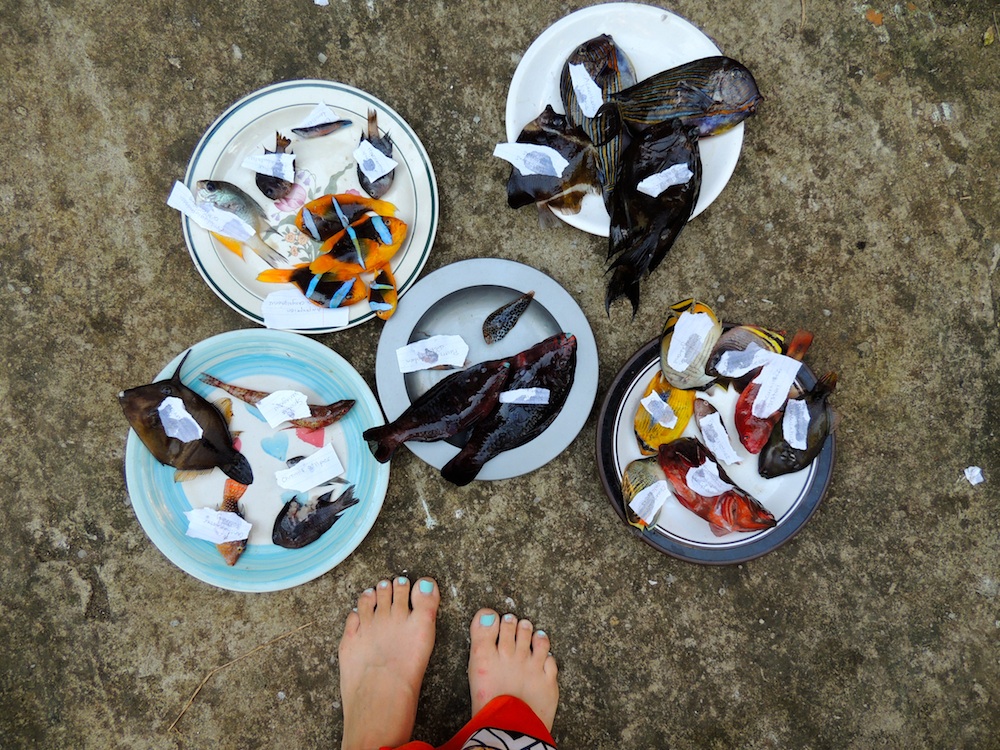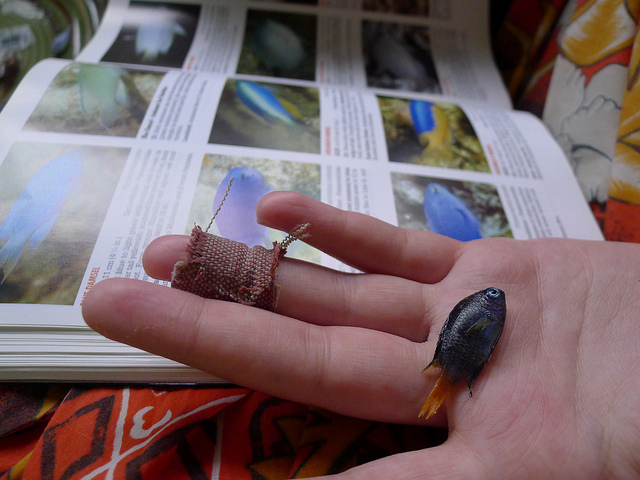My recent trip to Fiji was my first time catching fish. Up until now, most of my research and work underwater has involved watching fish, writing notes on waterproof paper, sometimes filming them, but essentially coming back to land empty handed.
And one of the many things I learned from Josh Drew during the expedition is that there are lots of questions about ecology and conservation that can best be answered by directly sampling fish AKA killing them.
It seems like a bit of an oxymoron to be a conservationist who kills fish. But as Josh explains here, this is the best way to create biodiversity time capsules that will show exactly what species were present at a specific point in time and space.
Our collection will let researchers come back here in the future and see how things have changed. It will help show the affect of a marine protected area due to be set up on part of the reefs we sampled.
And the collection will help Josh answer bigger questions, like how all these fish came to be on Fijian reefs in the first place. There are fewer species here than further west in the Coral Triangle so what subset of those species made it out east? Are they particular types of fish, eating particular types of food?
The fish catching methods we used were highly selective. Gone are the days when museum collectors ventured off to distant waters armed with sticks of dynamite (a quick a dirty way of collecting fish is to chuck in some dynamite, stand back when it goes boom, then go back to scoop up all the dead fish). These days, the tools of choice are hand spears powered by giant rubber bands and also fish anesthetic.
Douse a small coral head with this solution and all the fish hiding inside will quickly fall asleep (including the tiny ones – see below) and drift out into our waiting nets.

On one occasion in a ripping current I spied a lionfish – the first time we’d seen one – and was determined to recruit it into our collection (like some sort of modern day Noah’s ark, our rule was to only take two of each species and leave the rest behind). The lionfish wasn’t quite unconscious when it let go of the coral and began to drift downstream. I followed after it, watching it get more dopey and clumsy. It was only several minutes later, when I was far out of reach of my team mates, that I realized that all I had with me to bring the catch home was a small plastic bag. A couple of times I tried swiping at the lionfish only to wake it up and have it swim off angrily, sticking its beautiful deadly spines out at me.
Eventually, it stopped for long enough for me to arrange the open bag ahead of it. My catch tumbled in and I hoisted up the weirdest goldfish in a bag I’d ever seen.
It’s strange now to think of that lionfish in New York taking its place in perpetuity on a museum shelf. I wonder what questions it will one day help to answer.
Photos by Erin Eastwood and Amy McDermott.

Leave a Reply